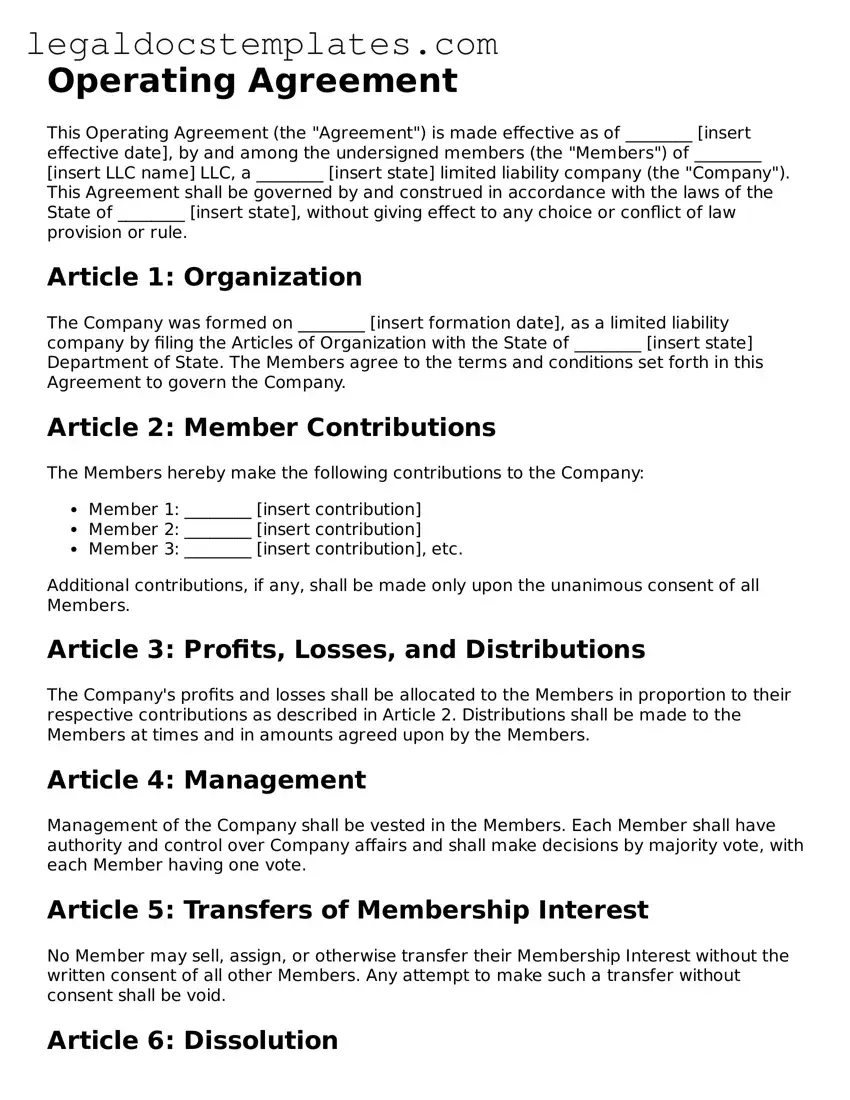An operating agreement, often associated with limited liability companies (LLCs), has similarities with several other legal documents, each serving its unique purpose while overlapping in functionality and intent with operating agreements. These documents establish guidelines, roles, and relationships in various contexts. Understanding their similarities and differences can be quite enlightening.
One similar document is the Partnership Agreement. Like an operating agreement, it outlines the business structure, roles, and responsibilities of the parties involved but is used specifically within partnerships. Both documents serve to prevent misunderstandings by clearly defining how profits are shared, how decisions are made, and what happens if a partner wishes to leave the business.
Another document is the Bylaws of a corporation, which, much like an operating agreement, detail the internal management structure of the entity. Bylaws focus on the governance of a corporation, including the roles of directors and officers, meeting protocols, and other procedural matters. This resemblance lies in their mutual goal of providing a clear operating framework for the organization.
The Shareholders' Agreement also shares similarities with operating agreements, especially in setting out the rights and obligations of shareholders within a corporation. Both documents can address issues like the transfer of shares, dividend policies, and dispute resolution procedures, albeit the Shareholders' Agreement specifically applies to corporations with multiple shareholders.
Employment Contracts, while focused on the employer-employee relationship, echo operating agreements in their detail of roles, responsibilities, and terms of engagement. These documents are vital in defining expectations on both sides, including job duties, compensation, and termination conditions, contributing to a structured operational environment.
Joint Venture Agreements outline the collaboration between two or more entities towards a common goal, bearing resemblance to operating agreements in detailing the project's scope, each party's contributions, and profit distribution. Both documents aim to clarify the terms of a cooperative endeavor, reducing potential conflicts.
The Franchise Agreement also parallels operating agreements, particularly in describing the relationship between the franchisor and franchisee. This includes the use of trademarks, operational standards, and financial arrangements, ensuring that the franchise operates cohesively within the franchisor's broader business model.
A Business Plan, while not a contractual agreement, shares similarities with an operating agreement in outlining the strategic direction of a business. It details the business structure, market analysis, and financial projections, offering a roadmap for growth and operation, much like an operating agreement structures the functioning of an LLC.
Non-Disclosure Agreements (NDAs) protect proprietary information, resembling the confidentiality provisions that can be included in operating agreements. Both documents ensure that sensitive business information is safeguarded against unauthorized disclosure, preserving competitive advantage.
The Terms of Service Agreement, commonly used in the digital realm, outlines the rules and guidelines for using a service or software. Like an operating agreement, it establishes the parameters of the relationship between the provider and the user, detailing rights, responsibilities, and limitations to foster clear understanding and compliance.
Lastly, the Indemnity Agreement, which involves one party agreeing to protect another against certain risks and damages, echoes aspects of operating agreements in managing risk and liability within business operations. Both documents can delineate the extent of financial responsibilities and protocols in adverse situations, ensuring preparedness and protection for the parties involved.
Each of these documents, while unique in its application, shares the common thread of structuring relationships and expectations within various business and legal contexts, similar to the operating agreement's role in an LLC. Understanding their purposes and similarities helps in navigating the complex landscape of contract law and business management.
